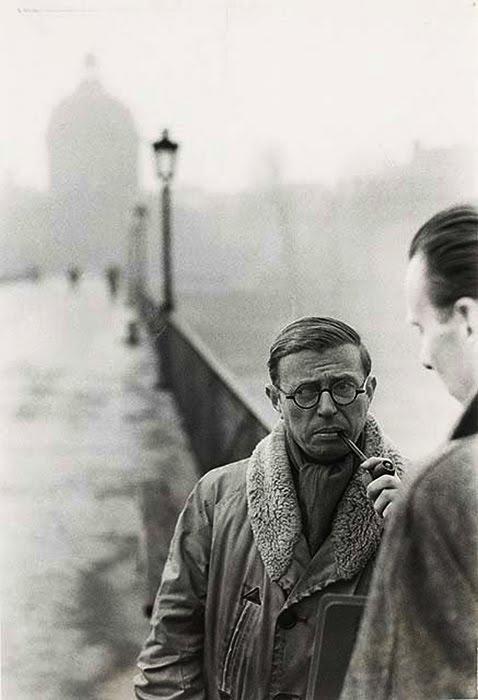If I were to start telling people about my discovery – as I’d be obliged to, once I’d identified the last photo – I’d also have to explain why the tradition had compromised itself so thoroughly. Otherwise, I’d be laughed out of town with my professional reputation in ruins. After all these years of sober, studied analysis, I’d end up being considered nothing short of a crackpot. The reader will therefore understand the great reluctance I felt to continue my search. I went nowhere near my office for weeks. I read almost nothing. Most of the time, I just stayed in bed watching midday murder-stories. Gradually, though, I managed to convince myself that, instead of obfuscating things further, the final photograph would actually explain to me a great deal which I could in turn explain to my peers. And so it was that three weeks after identifying the Doisneau’s role in the conspiracy I took up a collection of Cartier-Bresson’s work and began my search for the final shot in earnest. It wasn’t long before I came across this portrait of Jean-Paul Sartre, taken on the Pont des Arts in 1946.
Everything about this photograph points to it being the final, climactic piece in the whole jigsaw puzzle. Taken on the Pont des Arts in 1946, it shows Sartre busily aware of the presence of other observes. One eye stares frankly ahead at Cartier-Bresson; the other swerves out to the right, somehow alert to the timeless presence of Kertész in the faded dome of the Institut de France. Meanwhile, the identity of the informant, who stands Judas-like between Sartre and Cartier-Bresson, is quite appropriately a matter of some confusion. Many sources name him as Jean Pouillon, an anthropologist of note; other sources name him as Ferdinand Pouillon, an architect of notoriety, who was arrested in 1961 for embezzling corporate funds, imprisoned after a brief spell on the run and banned from practicing in France after his eventual release in 1964. Pieces of silver, I smirked. Weren’t the first photographs direct positives made on pieces of silver?
My original concern had been proved right. The final photo does ask more questions than it answered. Jean-Paul Sartre is the unseen subject of the series. He was the man for whom an entire photographic tradition staked out for an eternal instant. But why? As I said, it’s a big question and the possible answers have caused me quite considerable anguish related not only to the history of photography, not only to my professional reputation and career, but to my personal life and safety.
